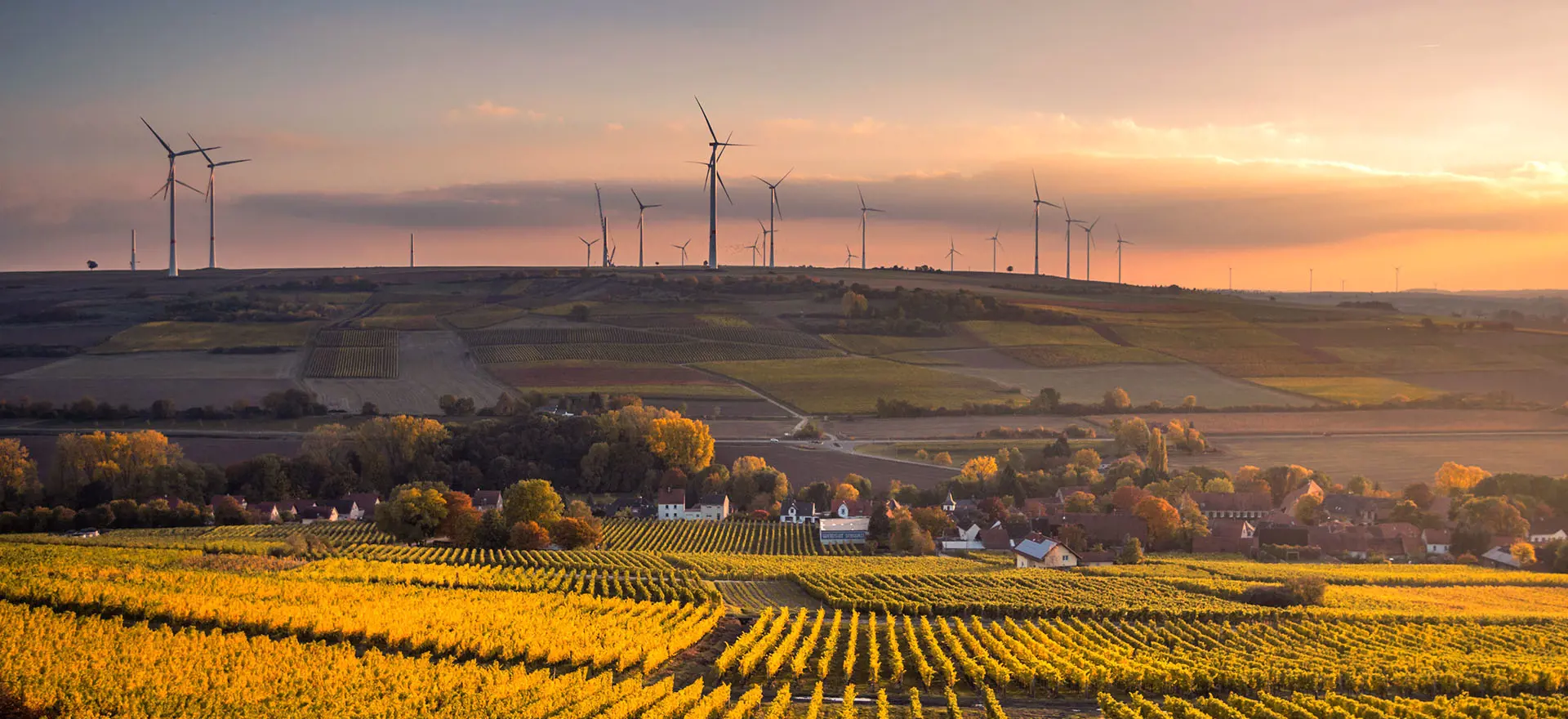UPDATED 08 DECEMBER 2022, FOLLOWING A FURTHER GOVERNMENT PUBLICATION
On Tuesday 6th December, Michael Gove, the Secretary of State for Levelling Up, Housing and Communities, published a Written Ministerial Statement on onshore wind development. We have previously discussed the role of wind energy, its current policy framework and the Government’s appetite for change. This was in October, when the, then Chancellor outlined his Growth Plan for the acceleration of delivery of key infrastructure. At this point, it became apparent that the Government was beginning to recognise the importance and role of wind energy in our nation’s energy security.
On Tuesday, the Government renewed its pledge to lift the “overly rigid requirements” for onshore wind. In his Statement, Michael Gove committed to undertaking consultation on the national policy framework for wind development, stating that the consultation would conclude by the end of March 2023.
Through consultation with local authorities, communities and businesses, the Government wants to make changes so that: planning permission is predicted on demonstrating local support and satisfactorily addressing the development’s planning impacts as identified by local communities; and giving local authorities the ability to demonstrate their support for areas to be suitable for onshore wind, moving away from the “rigid” requirement for site allocations. This gives us and other industry stakeholders a flavour of what shape the consultation process might take and the end goal for wind energy.
The Government also wants to consult on developing local partnerships for supportive communities who wish to host new onshore wind infrastructure, in return for benefits, including lower energy bills.
It is also proposed that proposals are still considered at the local level via a typical planning application route rather than through the Nationally Significant Infrastructure Project Regime.
Lichfields will keep abreast with the consultation process to seek to understand what it means for planning and the energy sector. In our below blog and previous research, we have looked at the possibility of embracing the Scottish approach to community support using community contribution payments. This now appears to be one option and it would introduce new commercial and financial incentives into the planning system. What, if any, additional community consultation requirements will there be for the planning application process itself? It will also be interesting to see what ‘material hook’ is placed within national policy to garnish support and ultimately how much land is opened up for development, if environmental policies and policy protection for the Green Belt, National Parks and Areas of Outstanding Natural Beauty are to be retained.
Our country is in the midst of an energy crisis and many of us may have given more thought as to exactly where our energy comes from. Log on to an app called
GridCarbon and you will be able to get some idea. This app tracks the carbon intensity of Great Britain’s electricity grid. As I sit and write this blog it is a sunny, not very windy, autumnal day and the app is telling me that the carbon intensity is 167 gC02/ kWh of energy. Whilst this particular figure is more difficult to put into perspective, what can be understood more easily is that at this point in time 40.2% of our energy is coming from wind (with 35.3% coming from gas). This surprised me and raised a lot of questions. On multiple checks of the app, wind can fluctuate from between 10 to 40%.
Now, more than ever, there is a commitment at a national level, within the development profession and amongst individuals, to drive towards changing to and developing renewable energy supplies. The national policy aim is to achieve net zero carbon emissions by 2050. Alongside this, in the current uncertain economic climate, the Government is aiming to achieve energy security and an energy price guarantee.
So, what role does wind energy play in achieving these aims? What is the current policy framework and is there an appetite for change?
The role of wind energy and existing planning policy
Great Britain is blessed with near perfect conditions for wind and key commercial stakeholders such as BP and Shell view the potential for wind as enormous. So why is it that figures from the
UK Government Renewable Energy Planning Database (updated July 2022) show that only 25 small scale onshore wind farms have been successfully progressed through the English planning system since 2015? Key industry groups such as the National Infrastructure Commission and the Climate Change Committee have
written to the, then, new Prime Minister with a set of energy recommendations. One of these is to make full use of new auctions for onshore wind. Jointly, advocates have called for changes in policy to promote onshore wind.
There is no hiding from the political and economic uncertainty that our country is facing so this blog is based on the current (but ever changing) political backdrop. So, what is the current planning policy framework for wind?
At present, wind projects with a generating capacity of 50MW and less are considered under the provisions of the
Town and Country Planning Act 1990. Those schemes generating over this threshold are considered Nationally Significant Infrastructure Projects (‘NSIP’) and are submitted as a Development Consent Order (‘DCO’) in accordance with the
Planning Act 2008. The Planning Act disapplied the provisions of the Electricity Act 1989 for projects in England (and Wales) (except in some circumstances, such as where the Marine Management Organisation (‘MMO’) is responsible for considering and determining applications under the Act for offshore generating stations with a capacity of more than 1MW but less or equal to 100MW).
In 2015, David Cameron placed greater planning policy requirements on onshore wind farms following a view that the public was
“fed up” with such developments and pushed for a ban on subsidising schemes. This stricter policy approach is set out in the
National Planning Policy Framework (‘NPPF’, July 2021). Paragraph 158 sets out the requirements on local planning authorities for determining renewable and low carbon development. Point B states that authorities should
“approve the application if its impacts are (or can be made) acceptable”. However, Footnote 54 sets out an exception for wind energy development
. “Except for applications for the repowering of existing wind turbines, a proposed wind energy development involving one or more turbines should not be considered acceptable unless it is in an area identified as suitable for wind energy development in the development plan; and, following consultation, it can be demonstrated that the planning impacts identified by the affected local community have been fully addressed and the proposal has their backing”.Research undertaken by the
University of West England in March 2022, identifies that since 2015 only 11% of local authorities have allocated areas for wind farms in their plans.
An appetite for change?
Is there now an appetite at Government level to change and embrace the opportunity that onshore wind has for our energy generation and security?
We are witnessing a period of political change (and uncertainty) and, not long after Liz Truss became Prime Minister, the, then, Chancellor, Kwasi Kwarteng outlined a
Growth Plan which included proposals to accelerate the delivery of key infrastructure. Whilst this Plan now appears to be ever changing in terms of economic policy and we are yet to see what Rishi Sunak and Jeremy Hunt may bring forward in the coming weeks, the Growth Plan published just last month does recognises that an offshore wind farm can take four years to get through the planning process and no new substantive onshore wind farm has received planning consent since 2015. It also recognises that the timespan for granting DCOs increased by 65% between 2012 and 2021. These delays and the policy position described above are undermining investor confidence and restricting growth in this renewable sector. Whilst the exact details of the Growth Plan are likely to change, one thing we do know is that one of Rishi Sunak’s top priorities will be energy security. Key energy market players are already voicing their views on the need for wind to play a key role in this (just a day after Sunak became Prime Minister).
The current Growth Plan announces that new legislation will be brought forward in the coming months to address the above barriers by reducing the “unnecessary burdens to speed up the delivery of much needed infrastructure”. This includes: reducing the burden of environmental assessments; reducing bureaucracy in the consultation process; reforming habitat and species regulations; and increasing flexibility to make changes to a DCO once it has been submitted. It also announces the priority of delivering a National Policy Statement for energy, waste resources and national networks and a cross Government action plan for reforming the Nationally Significant Infrastructure planning system, and, importantly, bringing onshore wind planning policy in line with other infrastructure to allow it to be deployed more easily in England.
This announcement is welcome. We are yet to see details of how this will play out in the planning system, whether the strategy will alter and it is likely to be some time until changes are made to national policy.
As a starting point, the NPPF would need updating and the pending National Policy Statement would need publishing. There will need to be a co-ordinated approach at all policy levels and this takes time, whether it be preparing a new Local Plan (or update) or supplementary planning guidance. There needs to be enthusiasm and a willingness by all stakeholders to move fast with policy objectives and, potentially, site or area allocations. This will involve an assessment of land characteristics and development opportunities and constraints as well as sustainability and environmental appraisals. What about also providing a set of locational requirements or drivers? Alongside policy objectives, commercial feasibility needs to be considered, including connections to the grid and funding opportunities.
The aim to “reduce bureaucracy in the consultation process” is positive and to ensure this is achieved consultation needs to happen early in the planning application and DCO process. As acknowledged by the NPPF in paragraph 39, early engagement has significant potential to improve the efficiency and the effectiveness in the planning system. Under the Planning Act 2008 there is a duty to consult (section 47). As this is current policy, it suggests there is a greater need for planning policies at national and local plan level to provide increased transparency (and a material planning consideration ‘hook’) to achieve local community support. Research undertaken by Lichfields in 2016 (i.e. after the original 2015 policy changes) considered the possibility of embracing the Scottish approach of using community contribution payments to assist in garnering community support in areas affected by renewable energy schemes. It will be interesting to see if this or any other consultation / community support mechanism is proposed.
As with any large scale development, any planning application or DCO needs to be accompanied by relevant environmental and technical assessments (either standalone or as part of the Environmental Impact Assessment process). Lichfields advocates “reducing the burden” of these assessments insofar as they should be proportionate (yet robust) to the nature and scale of the development. It is however important that they still meet the requirements of technical guidance and assessment bodies as well as the EIA Regulations. Lichfields will keep a close eye on what this means in reality.
Many of the amendments set out above are similar to those changes that have been proposed as part of wider planning reforms so we will keep our eyes on emerging information on how, when and if the above is ultimately delivered (especially in this highly uncertain period). Of key importance, is that all forms of important renewable energy, such as wind, are given the policy position they deserve and require to help us reach the net zero target and provide energy security for future generations.
References
Grid Carbon App
Governments Renewable Energy Planning Database
NIC and CCC letter to Prime Minister
NPPF
University of West England Research
Government Growth Plan
Header image: Karsten Würth on Unsplash



 Source: Our World in Data/Lichfields analysis
Source: Our World in Data/Lichfields analysis Source: Renewable Energy Planning Database (2021) / Lichfields analysis
Source: Renewable Energy Planning Database (2021) / Lichfields analysis Source: ONS Energy Trends: Renewable electricity capacity and generation (2022) / Lichfields
Source: ONS Energy Trends: Renewable electricity capacity and generation (2022) / Lichfields